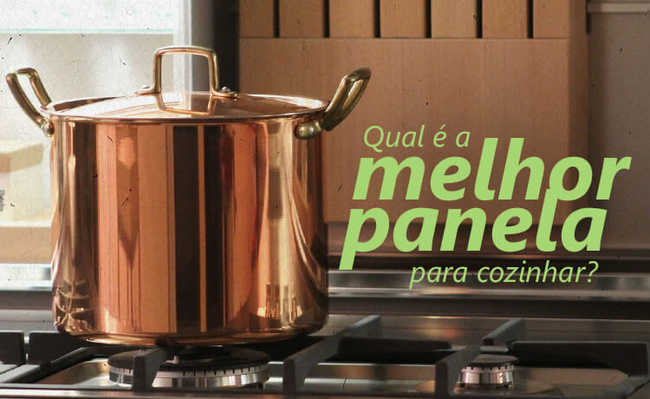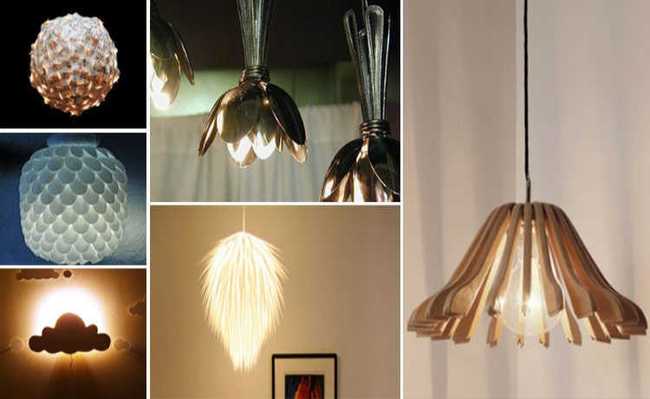Menstrual collector: advantages and how to use
Using a menstrual collector reduces waste production, avoids bad smells and contact with harmful chemicals

Edited and resized image from Good Soul Shop is available on Unsplash
The menstrual cup is a reusable alternative to disposable pads that can last up to ten years. It is made of hypoallergenic silicone and can be used without changing for up to 12 hours, depending on vaginal flow. Also, unlike traditional tampons, it is inserted at the entrance to the vagina, not the bottom of the canal, and poses no health risk.
- Toxic shock syndrome: what is it and what is its relationship to tampons
For those who like and adapt, the menstrual collector is an excellent alternative for sustainable consumption, as it significantly reduces the generation of waste. Rethinking our waste generation and changing habits to minimize it is a good way to start adopting an ecofriendly posture. Learn about the impacts of disposable absorbents on the article: "Disposable absorbents: history, environmental impacts and alternatives".
- What is the menstrual cycle?
Every month the female bodies of childbearing age prepare for fertilization. When it does not occur, the endometrium breaks free and the unfertilized egg and the uterine lining are eliminated. The contents of the menstrual flow are blood and inner uterine tissue. This elimination cannot be controlled from this elimination and, therefore, methods must be used to store this liquid so that it does not stain clothes or generate discomfort.
- What is menstruation?
- Menopause: symptoms, effects and causes
In this process, it is estimated that each person uses, on average, ten disposable pads in each menstrual cycle, which is equivalent to something between ten thousand and 15 thousand pads from puberty to menopause.
These pads became popular for their practicality, but, unlike the menstrual collector, they represent great damage to the environment. As in Brazil there is no recycling for this type of waste, they end up in dumps and landfills. Know what to do with used sanitary pads.
It is possible to drop the disposable absorbent
In addition to the menstrual collector, there are more sustainable options on the market, which cause less impact on the environment and have fewer harmful chemicals, especially for allergic people. Among them, there is the cloth absorbent. Learn about other options in the article: "Guide: environmentally friendly alternatives to disposable absorbents".
What is the menstrual collector?
The menstrual collector also prevents blood leakage, but it works differently from the traditional absorbent. It has been around since the 1930s and is a cup that can be made of medical silicone (non-toxic and translucent), rubber or hospital-grade thermoplastic elastomer that is inserted into the entrance to the vagina. The collector is discreet, molds to the body and avoids the discomfort of common absorbents.
As the name implies, the menstrual collector only collects the menstrual flow, without interfering with humidity, pH or local flora. The collector is amazing for people with allergies, as they are hypoallergenic and contain no chemicals, latex, gel, bisphenol, dioxin, glue, perfume, pesticides or bleaching agents.
The collector mechanism works by pressure. It makes a vacuum and attaches to the vaginal walls. If inserted correctly, they pose no risk of leakage. Manufacturers claim menstrual collectors can be used for up to 12 hours. Respecting the changeover time, you can also sleep with your collector. Then just remove, wash and use again.
Who has intense flow can also use the collectors, what can change is only the interval of hygiene. It is not necessary to remove it to urinate or evacuate. In addition to being a sustainable choice, the menstrual collector offers practicality, comfort and economy. It's perfect for all sports and physical activities, even for those with a lot of flow. Be it yoga, cycling, dancing, acrobatics, climbing, extreme sports, swimming, gymnastics, running, diving, among others. Another factor to be considered is that, as there is no contact with the air, there is no proliferation of bacteria that generate odors.
Menstrual scoop compared to sanitary napkins
To think that the menstrual cup is similar to the tampon is a misleading conclusion. Although both are inserted into the vagina, they are positioned at different heights and have completely different mechanisms, as shown in the image:

The tampon not only absorbs the menstrual flow, but also the natural moisture of the place, which can cause dryness - 35% of what is absorbed is body moisture and not blood. When the region is dry, the cotton rubs against the inside of the vagina and can cause irritation.
Internal absorbents are associated with the dangerous toxic shock syndrome. The menstrual collector, on the other hand, only retains the flow, not drying out or smothering the vagina, as do tampons and disposable external absorbents. This helps to lower the risk of infections as it inhibits the growth of fungi and bacteria.
The menstrual cup can hold about three times as much content as high-absorbent tampons and needs to be changed less often. Depending on flow volume, it can be emptied every eight or up to 12 hours, providing longer protection and comfort. Depending on the adaptation to use, it can be safer than conventional absorbents against leakage. If the manifold is open and positioned in the correct place, it will seal off the entire flow passage.
Traditional absorbents can cause a series of allergies, whether because of the various chemical substances they have, the smothering of the region or direct contact with the skin. The menstrual collector, on the other hand, does not generate these problems as it is non-toxic and does not alter the physiological conditions of the region, such as humidity, pH, vaginal flora and ventilation.
- Hygiene theory: when cleaning is no longer synonymous with health
A common model of menstrual collector is one made with medical silicone. The material has been widely used in the health area for not causing reactions in the body, being biocompatible and easy to clean. Silicone does not work as a culture medium for bacteria such as tampons, it does not irritate the skin like the external ones, and no substance is released from the collector and passes into the body, in addition to having a very long durability. The validity of the product depends on factors such as: frequency and mode of cleaning, vaginal pH and cleaning products used.
How to use menstrual collector
The method of putting the menstrual cup on is very different from other pads and therefore requires patience when adapting. It's natural to take up to four cycles to adjust, so initially, while you're still not quite sure how to use the menstrual cup, you can use a cloth pad together to feel more secure.
Culturally, women are not encouraged to know their own bodies. To insert the collector, you must know its anatomy and how to touch it. At first, this can cause discomfort and awkwardness for many people, but it is necessary to understand that menstruation is part of a natural process and is not disgusting. Contrary to what you might think, the menstrual collector is more hygienic than common absorbents, as it does not expose the blood to contact with oxygen, which is what generates odors.
The collector needs to be inserted at the correct height, open completely and thus generate a vacuum that will seal the passage of blood. To insert it into the cavity, different folds can be made and the ideal one will be the one that best fits you. If you have a well-regulated cycle, you can put the collector on even before you menstruate.

Before placing the collector, it is very important to wash your hands with soap and ensure that the collector is very clean. Remember to rinse very well, as soap in the vaginal canal can cause infections.
It's normal to be nervous the first time you test the menstrual collector, but it's important to try to stay relaxed and not tense your pelvis muscles. If you find yourself doing this, it's best to relax and try a little later. Some people prefer to squat down, others stand hunched over. However, inserting with tension can end up being painful and make the whole process difficult. Find a comfortable position in which you feel relaxed. It can be standing, crouching, sitting on the toilet, etc. Fold the collector and insert the folded collector. After placing it, stick your finger in and feel the edge of the cup, trying to see if it is completely open. If it is not open, you can try opening the collector manually.

Some types of menstrual collector have a kind of cabin, others a ball or ring, to facilitate handling and removal. In case of discomfort, these parts can (and should) be cut so that the cup adapts better to the female body.
Check the video for the right way to put on and take off your menstrual collector:
How to remove and clean the menstrual collector
The vacuum must be removed to empty the menstrual collector, otherwise the removal may be a little painful. Use the force of the vaginal musculature to push the collector down and then squeeze the cup to release the pressure. If you have positioned the collector closer to the cervix, it may be difficult to remove. It is important to relax, look for instructions in the manual and try to take it out calmly so as not to hurt yourself. Do not try to take it off without squeezing it.
Empty contents, wash with mild soap and water and reinsert. This process should be done according to the intensity of your menstrual flow, but on average it takes two to three times a day. If you have to empty it in a public restroom, you can clean it only with toilet paper, wet wipes or with the help of a small bottle of water. In these cases, in the next exchange, make a more careful hygiene with soap and water.
At the end of each cycle, it is recommended to boil it for five minutes. Aluminum or non-stick pans should not be used, as they release metallic substances that can damage the silicone. You can use an agate saucepan or sanitize it in the microwave using containers to steam sterilize pacifiers and baby bottles. Do not use products that can damage or increase the risk of irritation, such as disinfectant, dishwasher soap, alcohol, etc.
Some manufacturers recommend that the menstrual collector be changed every two to three years, but each consumer can decide when to change their collector according to their state. Just check if there are no signs of deterioration such as color change, if it is sticky, if it has an odor or brittle parts. It can last up to 10 years if it is well cared for and sanitized.
How to choose collector size
Choosing the proper collector size is critical to preventing leaks. Neither the weight nor the amount of flow interfere in the choice of model. People with heavy flow are likely to clean with a shorter interval. The choice of size is made according to the tone of the pelvic floor. Tonicity and elasticity naturally decrease with age and after pregnancy. People who have had intimate surgery or who have extremely strong muscles from kegel exercises, common in physical activities such as yoga, Pilates and pompoarism, may have greater tone regardless of age.
Brands in general have menstrual collectors made in different sizes. Models with the largest diameter are usually recommended for people over the age of 30 or who have had children (regardless of the type of delivery). However, people with these characteristics can also adapt to smaller models, as they have greater tonicity due to exercise or surgery. Generally speaking, the more tonicity, the smaller the collector . But this is a very private issue and varies from person to person. Girls can also use the collector designed for virgins, this depends on whether there is a hymen (some are born without) or if it is too thick - in the latter case, even intercourse with penetration may not be able to break it. The ideal is to seek medical help from a gynecologist to find out if it is possible to use the collector. But remember that sexual virginity does not depend on the presence or absence of a hymen, so you will not stop being a virgin if you use the collector, virginity is only lost when there is the first sexual intercourse.
Putting it on the tip of the pencil, the menstrual collector is also economical for the pocket. You stop spending every month on disposable absorbent pads and you save the environment. Not all people adapt to the collector, some feel cramps due to the pressure and others cannot place it correctly, suffering from possible leaks. Although adaptation is complicated at first, over time you will do the process in seconds. For financial savings, for the ecological aspect, or to avoid allergenic chemical substances, it is certainly worth overcoming prejudice and testing the menstrual collector.










